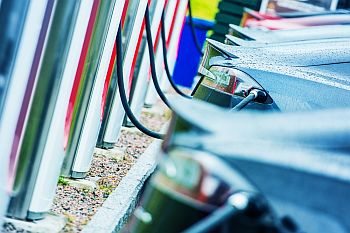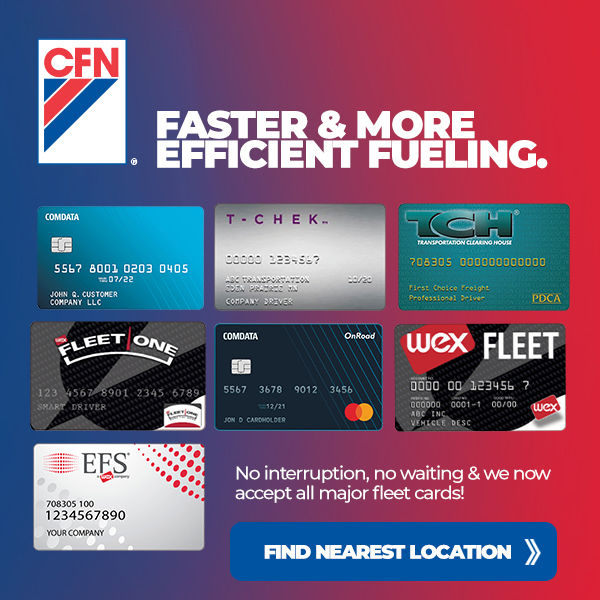
By Mark Boada, Executive Editor
October 2020
Every session at this years’ Automotive Fleet Leasing Association annual conference, conducted virtually last week, was worth tuning into. But the one I found most compelling was on fleet vehicle electrification. Moderated by Sara Sweeney, senior product manager at Wheels, it featured four seasoned veterans of fleet electrification: Sharon Etherington, senior manager of regional administrative services for Roche Diagnostics; Sila Kiliccote, co-founder of eIQ Mobility, a fleet electrification consulting company; Scott Miller, vice president of sales at Charge Point, Inc., a leader maker of electric vehicle charging infrastructure; and Matt Stover, Ford Motor Company’s global director of charging, energy services and business development.
Below is a transcript of their conversation that has been edited for clarity and length. AFLA announced that a recording of the session and all others from the three-day conference, will be available later this month.
Sweeney: What should a fleet operator be thinking about when they’re considering increasing their sustainability and electrifying their fleet?
Sharon: Our journey started out introducing hybrids way back in 2010, and little to no adoption took place. There wasn’t a lot of electrification in the fleet world, so we didn’t get a lot of traction. So, around 2016, we put all hybrids into our sales and service organization and that was all about gaining MPGs.
Fast forward to 2019 and the EV world looks completely different. It’s a very hot topic right now. So, like many others of you out there, we’re looking at putting EVs into our fleet. Also, in 2020 our organization came out with extremely aggressive emissions goals. Our goal was to be emission-free by 2050 and we have to be 75 percent there by 2030. These are intense goals that we have to think about. Fleet is the second biggest offender when it comes to emissions, so we know right now that fleet is about ready to get some unneeded and unwanted attention from our leadership.
So how does a fleet manager get in front of that? What do we do? What do I do to set up for success? I truly had to take a step back and look outside our company to get support. Our fleet can’t do this alone to help us understand what we needed to know about deployment of plug-ins and EVs in our fleet.
Where does it make sense to do this? Where geographically does it make sense? What does the timeline look like? And then how do we gain trust of our stakeholders and our leaders? And then how do we educate our drivers to drive the EV efficiently?
I think fleet managers are going to have learn to become skilled jugglers at the end of the day because there are many moving parts. So, we’re currently in the process of educating all leaders, all leaders of leaders, drivers, HR, your C-suite, employee relations and safety, health and environment to let them know where we’re headed to ensure they’re our supporters on the initiative of electrification.
Sweeney: Sila, can you talk us through how important planning and understanding are when you’re considering deploying EVs in a fleet?
Kiliccote: Planning for electrification, especially for a multi-state fleet, is extremely complex compared to planning for a fleet of internal combustion vehicles. For one thing, the price of electricity changes not only by location, but the time of the day as well. And planning for emission reductions is also really complex because, again, since the emissions created by utility companies are different depending on where you are in the country. So, at eIQ Mobility, we work with the fleet operator to optimize those decisions: which types of vehicles, and which specific vehicles to replace and where. We identify which of their vehicles are technically feasible to convert – that is, those that can meet the fleet operator’s performance requirements – and which also make financial sense.
One thing that we look at is the daily miles traveled to determine the most cost-efficient battery capacity. For example, we find that there are vehicles that travel maybe 25 miles 330 days a year, but 100 miles only 30 days a year. So, we sit down with the fleet operator and ask, “What is the goal? Is 90 percent coverage enough or do they expect the electrified vehicles to meet the range requirement 100 percent of the time?” We have found that 91 percent of fleet sedan and SUV routes are usually less than 160 miles and can be covered by EVs with one overnight charge.
Sweeney: Scott, can you talk about your experience with helping fleets electrify?
Miller: One of the main things that people have to plan in advance is their charging infrastructure. Getting a bunch of electric vehicles and not having the infrastructure is really not going to be helpful. The process takes longer than most people think. Not all fleets are the same. Some fleets are mostly medium- and heavy-duty, and others are chiefly passenger cars, but they’re at the depot. Other fleets are home fleets — we’re talking about sales and service people who take vehicles home. So, you have to think of all the implications.
When people are charging at the depot, what happens when they actually go out and need fuel outside the depot? Is there a way for them to pay for a charge with your fleet card? If you’re home, how do you get home charging stations and how do you reimburse employees for that?
The other important thing is to look at is how far do those vehicles travel and how much do they have to charge. In some big-city fleets vehicles will spend 15 hours in the depot and only go 30 or 40 miles a day, and you’ll have others that will only spend four hours at the depot and need to go 200 miles a day. You need a whole different strategy for charging, depending on what the application is and what you’re using. And we’ve been helping customers for years now trying to figure that out.
Sweeney: Matt, Sharon had mentioned that she’s working on getting her C-suite involved and get their level of understanding up. I’m sure her CFO is interested in some of the economics of electrification. Can you talk a little bit about that from your perspective?
Stover: There’s no doubt that from a global perspective the operating costs of running a BEV [battery electric vehicle] are lower than those of an ICE [internal combustion engine] vehicle. But this is a new experience. We’ve spent a lot of time over the last several years learning from our customers, and a couple of things have really come back to us as we think through our product, services, and strategy.
One, you really you have to think about the choices that you make with these vehicles beforehand so that you can capture the full benefit of the BEV itself. We like to think of it as sort of like the experience of transitioning from your old flip phone to a smartphone. It took you a moment when you first tried to use and understand it. I remember people looking at an Apple iPhone and saying, “Oh, my BlackBerry is just fine” or “I’m never going to type on a phone screen.” And then there’s the thought, “What does this offer to us?”
Everyone starts the journey with that kind of thought process. Then when you live with the BEV for a little while, you realize that this is a completely different experience. In order to capture the value of that experience, you have to think it through. And Sila was talking about the choices that you make regarding the utilization of the vehicle itself, because if you’re going to invest in the vehicle for range, that’s going to have a significant cost implication.
And so, it’s important for you to understand how your vehicles are going to be used and to recognize that there are different offerings that the OEMs will make so that they can meet those needs. I think to Scott’s point, when you think through your charging infrastructure, there are ways to thoughtfully consider your strategies here, so that the charging experience and the charging investment cost can actually be very much a plus to your organization instead of a minus.
So, with the new EVs and services that we are planning to offer to our customers, we want to ensure that we’re giving the customers an “and” experience and not a “but” experience. In order to do that, we’re going to have to wow you with the features of the vehicle, but also give you the confidence and comfort that the products and services that we surround you with will allow you to operate these vehicles so you can capture that long-term cost benefit.
Sweeney: I imagine that part of what you all go through is debunking myths. Everyone has misconceptions about electrification. I’m sure some people come to you as naysayers and you’re tasked with changing their minds. What are some of the common myths that you have had to debunk as you’ve helped electrify your fleet?
Sharon: My myth to debunk is that there are no EVs that fit our needs today. There are several EVs out there today that meet our needs, and even with COVID causing the OEMs to delay their new launches into 2022, we took a look at what the OEMs had to offer and absolutely found a fit for function for our vehicles.
We have two specific groups of drivers. We have a group that carry tools and small machinery in their vehicles, and we have a sales group that carry important customers in their vehicles. They need to have room, leg room and carry more than one or two people. So, I think fit for functions is very important, and I absolutely believe today we can find that.
I also believe we’re seeing better price points that are making more affordable vehicles in terms of overall TCO [total cost of ownership]. But again, it is up to us to educate our leaders on what that full TCO looks like over time. So, is the market saturated with EVs today? No, of course not. But are there choices? Absolutely. And of course, we are seeing progress. We’re seeing initiatives by the OEMs to bring more vehicles to the table, which is good news.
Kiliccote: One thing I can tell is that we can electrify many fleets today. We did an analysis of 22,000 fleet vehicles and found out that 59 percent of the vehicles in different classes were technically feasible, meaning that there is an EV that could meet the fleet’s needs, and that 38 percent were economically feasible, meaning that you can electrify at or below your current TCO.
And it’s not just in California. It’s 82 percent of the fleet sedans in Georgia, New Hampshire, Indiana, and Texas are actually economically feasible to electrify today and 57 percent of light-duty vehicles are economically feasible. EV TCOs are often better than ICE TCOs, especially in certain locations, due to excellent residual values, lower maintenance and operating expenses, and available incentives. With passenger sedan EVs, you can save about 19 percent on TCO, with passenger SUVs around 20 per cent, and passenger trucks around 28 percent. And sustainability savings are usually significant, too, especially in states that generate electricity from renewable sources, like Oregon, California, Washington and even in Pennsylvania.
Let me give you a quick example. We worked with a fleet with about 2,500 vehicles, and over 1,200 were economically feasible to electrify. That generated a savings of close to 4,000 metric tons of CO2 and costs of $9 million over ten years. So, we’re talking about big savings, not just breaking even.
Sweeney: Scott, what myths are you having to debunk?
There’s one out there that says there’s not going to be enough electricity to power all these electrified fleets, that the utility companies won’t be able to handle the demand. We talk with utilities all the time and they’re not really concerned about it.
The second myth is that bigger [charging facilities] and faster [charging times] are better. We get a lot of people coming to us saying, “OK, I need to put in a DC fast charger which is going to power the vehicle in 20 minutes.” And in fact, DC is not always better in some places.
If you have Class 7 and 8 trucks, yes, you may need that, but in other cases, slower charging is actually better. DC is a lot more expensive to bring the electricity to your site, and it may not be the right solution in some cases. An AC charger can take three or four hours to charge a vehicle, but even then, you may not have to put full power into the vehicle. In some fleets where they’re at the base for a long time and they don’t put a lot of mileage on the car, you can actually over-populate your panels so you’re putting two or three or four charging ports off of one circuit.
The advantage of that is that you’re only using the power that you need, and you can actually power more cars with the same line from the electric utility. And that utility company infrastructure can be expensive, especially when you’re looking installing chargers at all your depots and other buildings.
There is a shift going on in charging infrastructure, which is putting all the charging stations in place and distributing electricity to vehicles as they need it and only when they need it. So, for instance, if you have power coming in from your utility, you may want to wait to charge your vehicles until 11, 12 o’clock at night. You also may want to balance the charging so that when somebody plugs in it may not start charging right away. The driver or fleet manager does not have to know about that. They want to know that when a vehicle comes in, they plug it in and they walk away and they’re done. Then the magic happens, and when it charges and how fast it charges is all managed by the charging infrastructure.
Sweeney: All right, Matt, how about you? At Ford, what myths do you have to debunk?
Stover: We do an awful lot of research with customers, and this always comes up: can you safely charge an EV in the rain? It is possible, and it’s not a health risk, it’s not a hazard.
You’d be surprised. A very senior electrical engineer on my team described the first time that he plugged in his car in the rain he held his breath for a moment. And the reason I start off with that is that it shows that is we’re learning something new here, and sometimes, when we approach something new, we approach it skeptically, which is always important.
It’s really a cognitive challenge for you as a user to perceive the opportunity because you always feel the risk. And so for us, when we when we look at the arc of the experience for the customers, it’s trying to understand how we can get the customer to go from their pre-EV self to a post-EV self as quickly and with as little pain as possible, because oftentimes, once you solve the problems related to the EV, experience becomes a real plus.
A big challenge we hear from fleet teams is concern about whether electrification is going to be perhaps a disruption to the way fleets operate. These new vehicles are connected in ways that they have never been connected before, which allows us to pull data off of the vehicle and understand the usage of the vehicle in a way that we haven’t in the past. This can not only create a greater sense of confidence in these vehicles, but also create new services and utility for our fleet customers as they think about the operation and productivity of vehicles.
The other thing that we hear a lot about is the learning curve issue. We have to teach our drivers the best way to operate these vehicles. There are ways that are better than others.
That’s something customers have to face whenever they face a new product.
It really doesn’t take long to figure out how to drive these cars and operate these cars and effective manner, and once you learn that the savings are fairly significant.



